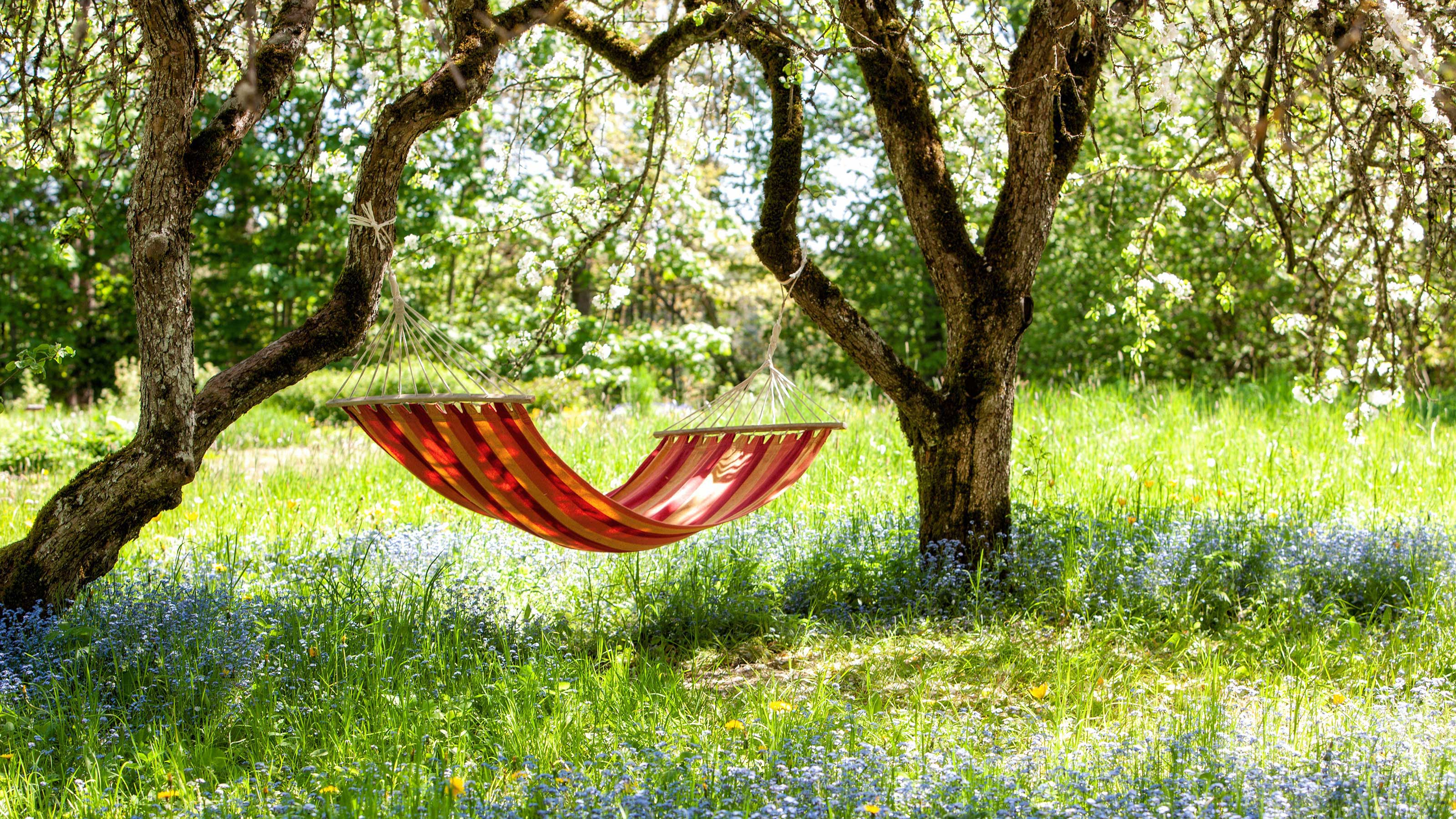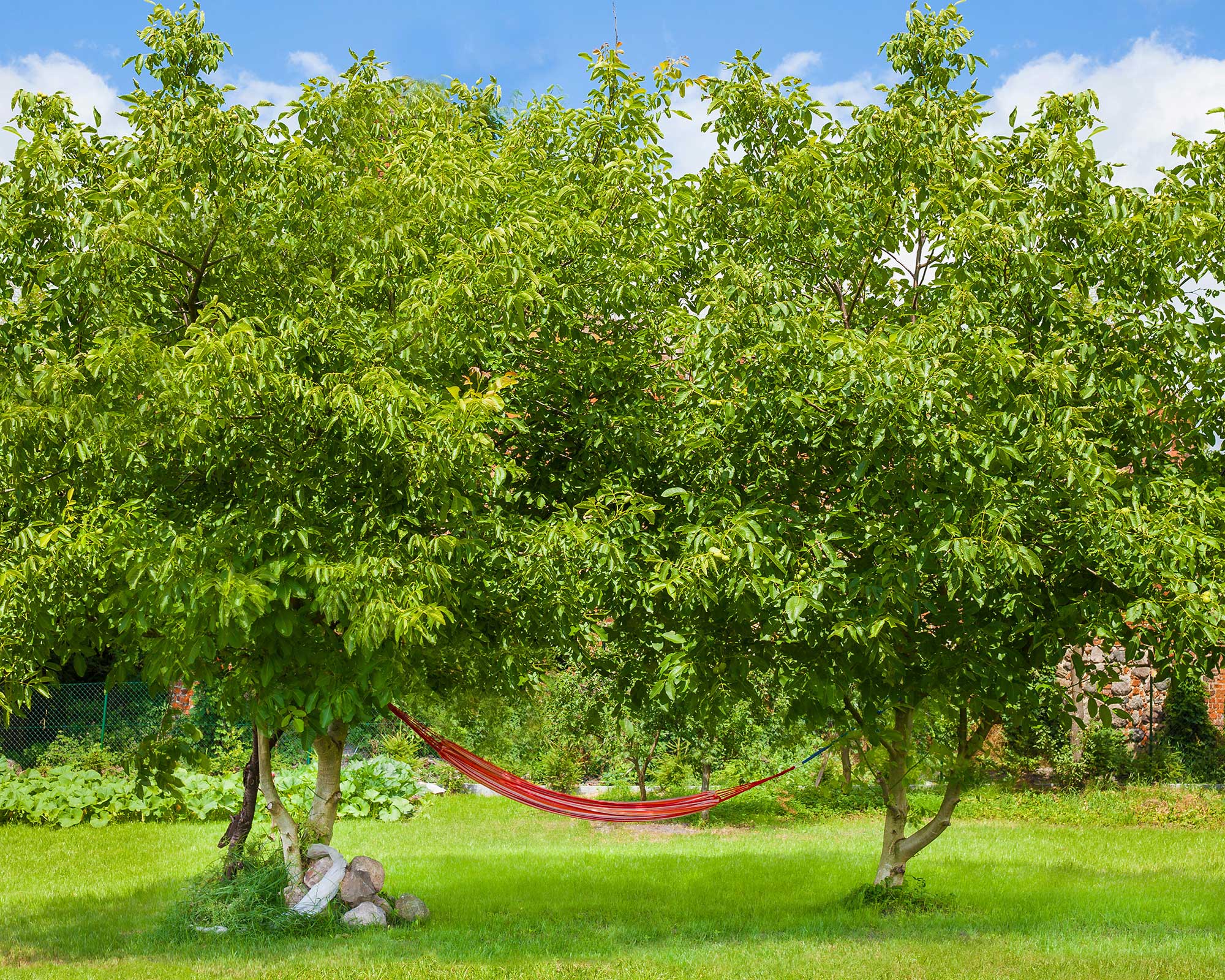How to hang a hammock on a tree: 4 steps for installing this summertime seating solution
Embrace a boho style in your backyard by learning how to hang a hammock on a tree – it's the perfect way to relax in the sunshine


Learning how to hang a hammock on a tree properly is crucial if you're adding one of these gorgeous features to your garden. After all, you'll want it to feel safe and secure when you use it – plus, the correct installation will reduce the risk of damaging your trees.
There are lots of reasons why investing in one of the best hammocks is a good idea for the summer months. As Ned Cromack, Founder of arboricultural services Bristol Tree Medic says, 'Hammocks are a beautiful space to relax outdoors – you can read, listen to music, or take a nap comfortably while avoiding being disturbed by insects on the ground.
'What's more, due to the leafy canopy overhead, you can stay protected from the sun,' he adds. All you need is an iced drink in hand and you've got a lovely setup for whiling away a summer's afternoon.

A hammock is the perfect spot for summertime relaxing
How to hang a hammock on a tree – a step-by-step guide
Ned shares his top tips on how to hang a hammock from a tree so you can enjoy one of these laidback outdoor seating ideas in your garden.
1. Pick the right spot for your hammock
The first step of hanging a hammock is to pick a good spot.
'Make sure the trees are strong enough,' says Ned. 'The trunks should be at least six inches wide to support the hammock safely. Try to use the main trunks of the trees rather than the branches, as branches are much more prone to breaking.'
Ned also advises checking the space above your hammock to ensure there are no broken or dead branches hanging overhead. It's also a good idea to clear any sharp stones or rocks on the ground beneath, just as a safety precaution.
Aside from these factors, you may also wish to consider garden privacy, quietness, and the view of the surroundings for the perfect hammock-hanging spot. A space at the bottom of your plot surrounded by pretty planting, for instance, could be the perfect place to retreat after a long day. Picking a flowering tree is also a nice approach, as you can enjoy looking up at the blossoms as you relax.

Find the perfect place to hang your hammock
2. Decide how to fix your hammock to the tree
There are multiple methods for attaching a hammock to a tree, explains Ned.
If your hammock just has ropes at each end, you can simply tie these around the two trunks with knots. However, Ned says that it is much better to invest in specially-made straps which are designed to support hammocks without causing damage to the tree.
This is because they are wider, so the surface area is bigger which stops them from cutting into the cambium. The cambium is the living tissue around the circumference which is used to pass water and nutrients around the tree. 'Damaging this is essentially "ring barking",' says Ned, 'which can kill the tree.'
Ned recommends buying daisy-chain style hammock straps as these are the most versatile – they can be adjusted to suit all sizes of trees and will remain secure.

Use hammock straps to protect your tree
3. Secure the hammock
If you're using straps, secure one strap to one tree trunk, pulling it tight, then secure the second strap to the other tree, at about an equal height of 6ft. Bear in mind that the hammock will sag when in use, so you will need to ensure it's high enough.
Next, you need to attach one end of the hammock to one of the straps. A lot of hammocks will come with carabiners attached to both ends which can simply be clipped onto the strap through the existing loops. 'The beauty of the daisy-chain straps is that there are tiny increments between each loop, which allow you to adjust your hammock easily without tying any knots,' says Ned.
If you don't have carabiners, you will have to thread the ropes at the end of your hammock through the strap loopholes and tie a secure knot. Ned recommends the Beckett Hitch knot.
'If you're securing your hammock simply by wrapping the rope around the tree and tying a knot, the best knot is probably a "cow hitch". This can be tied under tension and is secure, safe, and easy to adjust,' he adds.
It's important to note that when using a hammock, there is a lot of force being put onto the trees, and a lot of force going through the ropes and the carabiners. Every hammock will have a weight limit, so do check this and avoid exceeding it.

Straps and carabiners are a good way to secure a hammock safely
4. Re-adjust the hammock until it's perfect
'The whole process is a bit of trial and error,' says Ned. 'It'll be a miracle if you get it completely right the first time. There are no hard and fast rules on measurements. It all depends on the height and weight of the people using the hammock. Plus, the amount of support needed comes down to personal preference, much like a mattress.'
Once it's up, give it a test run and see if it works for you – if not, re-adjust it until it feels perfect. Then, it's time to relax and enjoy your new garden feature.
It's a good idea to take your hammock down and put it into garden storage if you're not planning on using it for a while, Ned adds. This will keep it in good condition and help prolong its life.

A pretty setup from Walton & Co
What are the best trees to hang a hammock from?
From low maintenance trees and trees with red leaves to the best trees for small gardens, there are all sorts of options for a backyard. And as Ned explains, no particular species is best for hanging a hammock from.
Once you've learned how to hang a hammock on a tree, just ensure the ones you choose are thick enough and look healthy, he says. 'There should be leaves on the canopy (providing it's the right season), and the roots shouldn't move when you're sitting in the hammock.'

The garden was always a big part of Holly's life growing up, as was the surrounding New Forest where she lived. Her appreciation for the great outdoors has only grown since then. She's been an allotment keeper, a professional gardener, and a botanical illustrator – plants are her passion.
